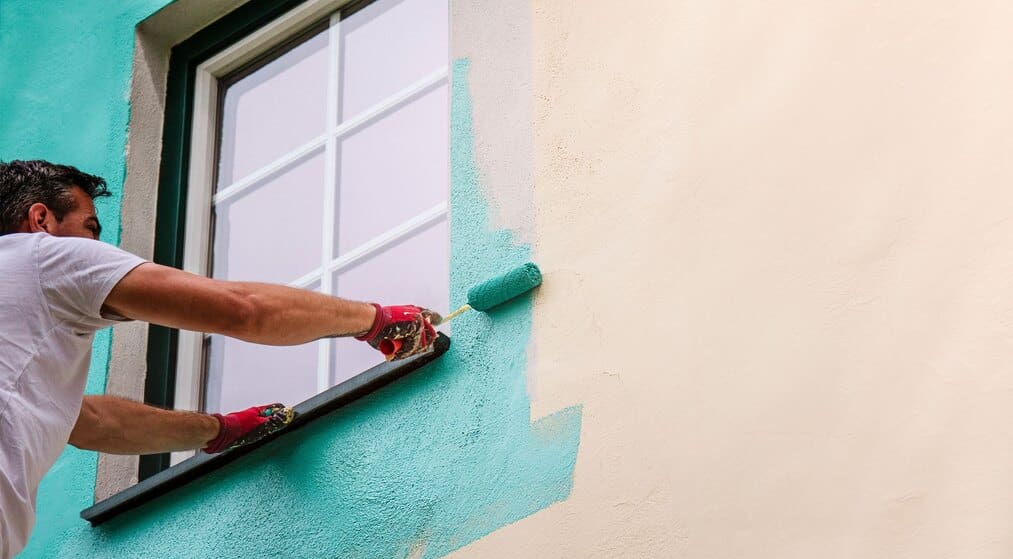How to Prepare Your Home for Exterior Painting: A Step-by-Step Guide

A fresh coat of exterior paint does more than refresh your home’s appearance—it protects it from harsh weather, moisture, and daily wear. But before the first drop of paint hits the surface, proper preparation is key to achieving lasting, professional results.
Whether you’re hiring a painting contractor or considering a DIY approach, knowing how to prepare your home for exterior painting ensures a smoother project, fewer surprises, and a finish that holds up over time.
In this step-by-step guide, we’ll walk you through everything you should do before painting begins—from clearing the area to inspecting surfaces.
Clear the Work Area
Before any exterior painting project starts, the first priority is creating a safe and accessible work zone. This not only speeds up the process for the crew but also protects your property from accidental damage.
Take a few simple steps to get the area around your home ready:
- Move outdoor furniture away from walls, including chairs, tables, planters, grills, and children’s toys.
- Detach removable décor like house numbers, wind chimes, wreaths, and wall-mounted art.
- Open access to gates and walkways so the painting crew can easily move ladders and equipment.
- Trim back overgrown shrubs and branches that could interfere with the painter’s reach or rub against fresh paint.
If your home has limited space or tight landscaping, mention it to your painting contractor during the estimate. A heads-up allows them to plan accordingly and bring the right tools.
Protect Landscaping and Surroundings
Even with careful painters, drips, splatters, and foot traffic are inevitable during exterior work. Taking a few extra precautions helps shield your landscaping and hardscaping from damage while making cleanup easier.
Most professional painters will bring their own drop cloths and coverings, but as a homeowner, you can jump-start the process and communicate any concerns ahead of time.
Here’s how to safeguard your outdoor areas:
- Cover flower beds, shrubs, and mulch with breathable fabric or plastic sheeting to protect from overspray.
- Drape patios, decks, and walkways with drop cloths or tarps, especially near siding or trim being painted.
- Flag delicate plants or recent landscaping work so the crew knows to be extra cautious in those areas.
- Secure pets and keep them away from the work zone—they may walk through paint, damage coverings, or get in the way.
If you’ve recently invested in landscaping or have areas of concern, mention them during your project walk-through. Painters appreciate knowing where to exercise extra care.
Wash and Inspect the Exterior
Once the space around your home is clear and protected, the next step is getting the exterior surfaces clean. Dirt, mildew, and flaking paint can prevent new paint from adhering properly, leading to uneven coverage or early failure.
Before painting, your home should be thoroughly washed and inspected. Some painting companies include this in their prep process, while others may require it to be completed in advance.
Key steps to follow:
- Pressure wash or hose down all siding, trim, and fascia to remove grime, pollen, and surface mold. If pressure washing, use low to moderate pressure to avoid damaging siding or forcing water under panels.
- Scrape and sand any peeling or bubbling paint to create a smooth base for new layers. Focus on problem areas like window trim, eaves, or older wood siding.
- Look for signs of wear or damage—rotting wood, mildew stains, cracked caulk, or pest issues. These spots may need repair or priming before paint is applied.
- Let surfaces dry fully—at least 24 hours after washing—before painting begins.
Proper surface prep is critical to achieving a smooth, professional finish. If you’re hiring a pro, ask what prep steps they include and what’s expected from the homeowner.
Handle Repairs Before Painting Begins
Painting over damaged or unstable surfaces might save time up front, but it guarantees problems down the road. From peeling to premature cracking, even the best paint can’t compensate for underlying issues.
Before your exterior painting project begins, take time to address any visible damage or maintenance concerns. A well-prepared surface ensures better paint adhesion, more even coverage, and a longer-lasting result.
Here’s what to inspect and fix before painting:
- Replace rotting or warped siding boards, especially around windows, doors, and moisture-prone areas.
- Re-caulk seams, gaps, and trim joints to seal the exterior from water intrusion and improve energy efficiency.
- Fill cracks and patch holes in stucco or masonry with exterior-grade filler.
- Prime bare wood or patched areas to help the topcoat bond properly and avoid uneven absorption.
Many homeowners ask how to prepare their home for exterior painting when repairs are involved. If you’re unsure which tasks to tackle yourself, ask your painting contractor if they include light prep and repair work as part of the project. Some teams may offer wood replacement, caulking, or carpentry touch-ups for an additional fee or refer you to a trusted partner if larger repairs are needed.
Plan for Weather and Access
One of the most overlooked parts of prepping for exterior painting is timing, both in terms of weather and access. Even if the surfaces are clean and prepped, poor planning can delay or complicate the work.
In Colorado and other regions with variable climates, temperature swings, wind, and sudden storms can impact scheduling and dry times. It’s important to coordinate closely with your painting contractor to pick an optimal window and ensure everything is ready to go.
Before painting begins, take a few final steps:
- Monitor the weather forecast and aim for a stretch of dry, mild days (ideally 50°F–85°F). Humidity and rain can affect drying and adhesion.
- Remove exterior screens, light fixtures, and decorations that are in the way of surfaces to be painted. Store them safely until the project is complete.
- Ensure gates are unlocked and hose hookups are accessible so the crew can reach all areas of the home.
- Notify neighbors if equipment or vehicles may temporarily block driveways or shared space.
Planning ahead avoids last-minute surprises and allows your contractor to work efficiently. If the weather becomes a concern, a reliable painting company will help you reschedule promptly to protect your home and the quality of the finish.
A Little Preparation Goes a Long Way
Knowing how to prepare your home for exterior painting is one of the smartest ways to protect your investment and ensure a smoother experience. By clearing the work area, protecting landscaping, cleaning and inspecting surfaces, making repairs, and planning for weather, you’re setting the stage for a professional result that looks great and lasts.
If you’re working with a trusted local painting company, don’t hesitate to ask what’s included in their prep process—and what you can do in advance to help. The more prepared your home is, the more efficient and stress-free your project will be.
Ready to give your home a fresh new look?
Request a free quote or learn more about our exterior painting services today.

